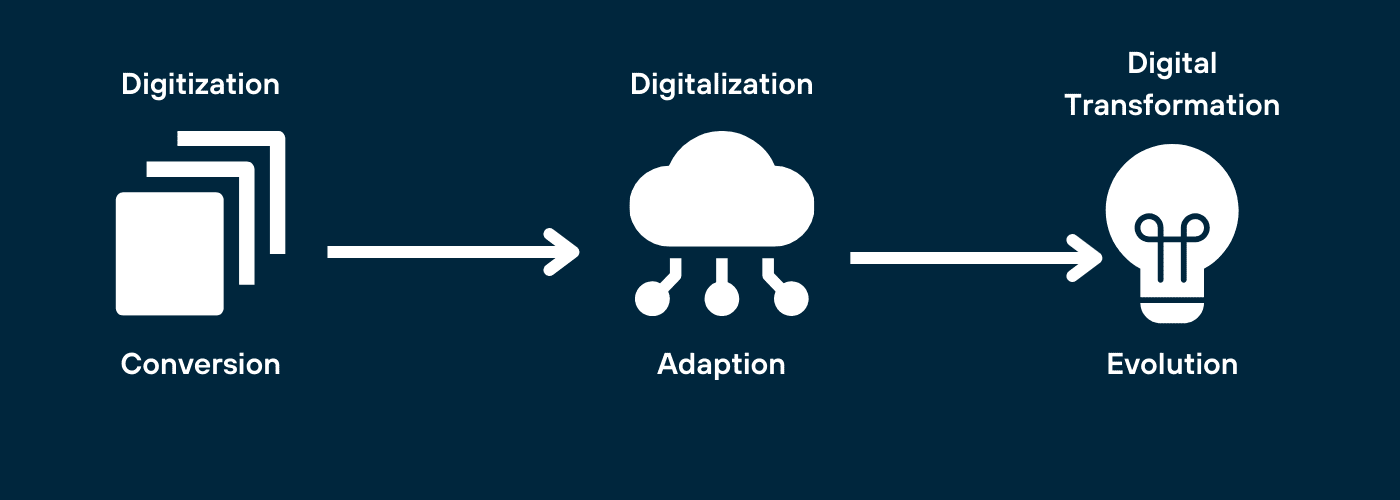Introduction
In today’s fast-paced technological landscape, the intersection of Information Technology (IT) and Digital Transformation is becoming increasingly significant. This fusion is not just about adopting new technologies but about reshaping entire business models and processes to leverage these technologies for greater efficiency, innovation, and competitiveness. Let’s delve into how IT and Digital Transformation converge and what this means for modern organizations.
Information Technology (IT) encompasses the use of systems, software, and hardware to manage and process information. It forms the backbone of virtually every modern business, enabling day-to-day operations and facilitating communication, data management, and more.
Digital Transformation, on the other hand, refers to the profound changes that businesses undergo by integrating digital technologies into all aspects of their operations. This transformation is not just about technology but also involves changes in organizational culture, processes, and customer interactions.
1. The Role of IT in Digital Transformation
– Infrastructure Modernization: IT infrastructure is the foundation of digital transformation. Upgrading hardware and software systems to support new technologies, such as cloud computing and artificial intelligence (AI), is essential. Modern IT infrastructure ensures that businesses can handle increased data volumes, enhance security, and improve scalability.
– Data Management and Analytics: Effective data management is crucial for digital transformation. IT systems need to handle large datasets, integrate disparate data sources, and employ advanced analytics to generate actionable insights. This capability allows businesses to make data-driven decisions and tailor their strategies to meet customer needs better.
– Automation and Efficiency: IT enables automation of repetitive tasks through technologies such as robotic process automation (RPA) and AI. By automating routine processes, organizations can reduce errors, increase efficiency, and free up human resources for more strategic activities.
– Enhanced Communication and Collaboration: Digital tools facilitated by IT, like collaboration platforms and unified communication systems, help teams work together more effectively, regardless of their physical location. This is especially important in today’s remote and hybrid work environments.
– Cybersecurity: As businesses undergo digital transformation, protecting digital assets becomes increasingly critical. IT departments play a key role in implementing robust cybersecurity measures to safeguard data, systems, and networks from threats.
2. Challenges and Opportunities
Challenges:
– Legacy Systems: Many organizations grapple with outdated IT systems that are incompatible with new technologies. Integrating or replacing these systems can be complex and costly.
– Skill Gaps: The rapid pace of technological advancement often outstrips the availability of skilled professionals. Companies may struggle to find or train employees with the necessary expertise.
– Change Management: Digital transformation involves more than just technology; it requires a shift in organizational culture and processes. Managing this change effectively is crucial for success.
Opportunities:
– Innovation: By embracing new technologies, businesses can drive innovation and differentiate themselves in the market. Digital tools can lead to the creation of new products and services, enhancing customer experiences and opening new revenue streams.
– Competitive Advantage: Organizations that successfully integrate IT into their digital transformation efforts often gain a competitive edge. They can respond more swiftly to market changes, optimize operations, and deliver better value to their customers.
– Scalability: Modern IT solutions, such as cloud computing, offer scalability that allows businesses to grow without significant infrastructure investments. This flexibility is vital for adapting to changing demands and market conditions.
Conclusion
The intersection of IT and Digital Transformation is a dynamic and evolving space that presents both challenges and opportunities for businesses. By effectively leveraging IT to drive digital transformation, organizations can enhance their operations, innovate, and stay competitive in an ever-changing market. Embracing this convergence requires a strategic approach, a willingness to adapt, and a commitment to continuous improvement. As technology continues to advance, the integration of IT and digital transformation will remain a crucial factor in shaping the future of business.

